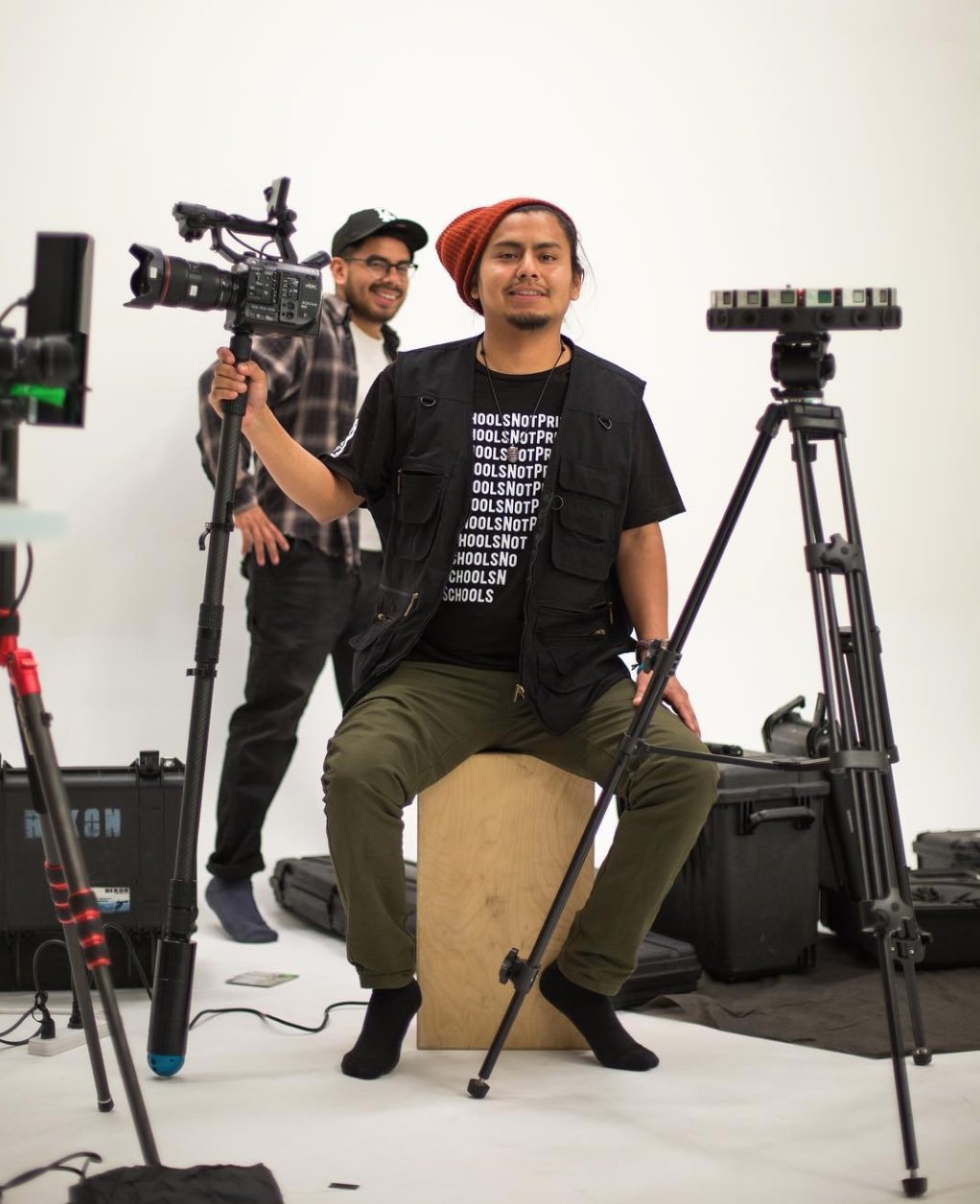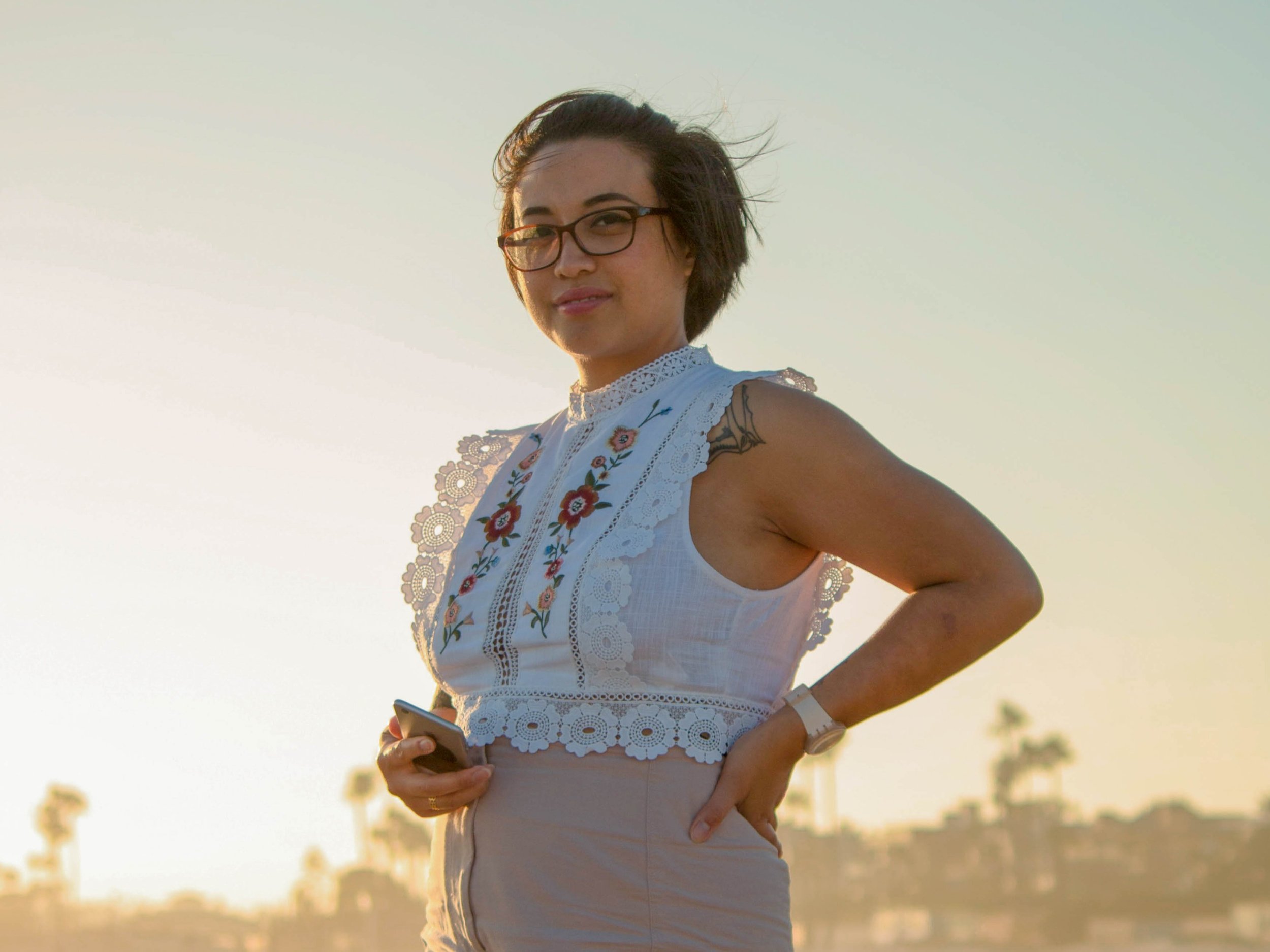Through Our Lens: Filmmakers reflect on their art journeys
Editor’s Note: This is the first part of “Through Our Lens,” a series of short stories about undocumented filmmakers and media-makers in the entertainment industry. Storytellers in the Through Our Lens series discuss identity, the power of art, and the need for equitable opportunities for immigrants.
Hangelic Rivera
Hangelic (she/her/hers) is a cinephile, writer, and a growing storyteller. Hangelic was born in Quezon City, Philippines, and lived in Riyadh, Saudi Arabia, for eight years before migrating to the United States in 2001. She recently graduated from Sacramento State with a film and ethnic studies background, intending to become a published film critic. Her work culminates in analyzing films and pairing them with historical stories about communities of color and underrepresented perspectives.
“Filmmaking bonds people. The stories you tell and what you see in film, we can always connect to someone about it. There’s always something relatable that you can find. It’s almost like food in a way,” she said.
Hangelic believes that her experiences being undocumented are hardly told in the mainstream and that Asian and Asian American experiences are not generally validated.
“Where are human resources for people who are not in studios or not part of any union? Who is watching their back in terms of legality? How are these people protected? They’re not, and that’s the biggest thing,” Hangelic said. “People in the industry should be more aware of these things and give access to people like freelancers, to human resources, undocumented or not.”
Wil Prada
Sounds of a beeping call emanate through my laptop screen. Wil (he/him) answers our Zoom call with a grin on his face.
“I’m a filmmaker, Peruvian, director of photography, gaffer. I’m also undocumented and an Indigenous Latino. I haven’t heard that word much, but that’s how I’ve been feeling lately,” he said.
Wil seeks to heal the disconnect between his family’s origins and the realities of growing up in the big city of Lima, Peru, by embodying his Quechua roots and the power of his dark skin and Indigenous features. His earliest memory of creating art was for a poetry assignment in elementary school.
“I had experienced a low magnitude earthquake, nothing too strong. It was a common thing for us to experience in Peru. There was a civil war happening, and sometimes bombs would go off. I don’t know if it was a quake or a bomb, but I wrote a poem describing the feeling of it. I remember drawing cables from electric posts shaking and women screaming. My teacher said that I captured the essence of the earthquake, and that was really encouraging. That might be one of the earliest memories of me creating art,” Wil said.
In 2012, Wil became involved in youth organizing at a time when undocumented youth were using their agency to tell their own stories. A fellow organizer taught him camera fundamentals and editing. Wil utilized these skills by filming an event in collaboration with Dream Team Los Angeles, where immigrant youth and their families were provided access to lawyers, funds, and pathways to apply for legal help.
“I was part of the media team that supported creating and accessing media ourselves. I wanted to be intentional about what kind of messages we put out there through the press. We couldn’t rely on the press to tell our stories. We believe that we got to tell our own stories. We asked people questions, we had laughs. It was a good day of celebration, and people were happy to finally have some kind of legal ability to work and not feel like they were just in complete limbo. So there were a lot of good vibes,” Wil said.
Armando Ibañez
Inspired by blockbuster movies and Mexican cinema, Armando (he/his/him) found his calling for writing at seven years old. But the moment that inspired him to share his own story happened much later.
“When I saw a movement of undocumented queer protesters, it was the movement of the Dreamers in 2010-2011. I was like, ‘Who are they?’ I went to the protest rallies, and I started becoming friends with many of them and realized that many in the movement identified as queer, trans, bi, and gender non-binary. That’s when I felt like I belonged here for the first time. I belonged somewhere. That is when I embraced my identity as a queer, undocumented immigrant,” Armando said.
Armando’s self-discovery journey empowered him to come out to his family and friends and be unapologetically vulnerable about who he is on social media.
“I was dealing with depression because sometimes the responses are not too positive,” he said.
Armando Ibañez holds flowers at a screening of his episodic YouTube series Undocumented Tales. Photo: Javi Pulpolibri
During this time, Armando discovered a YouTube series called “The Misadventures of an Awkward Black Girl” by Issa Rae.
“I felt it brought me back to life. I felt so inspired. I think I can do that. I can tell my story. I can tell everything that’s inside me,” he said.
In 2016, Armando wrote and created an episodic YouTube series called “Undocumented Tales,” which centers on the journey of a Mexican and queer server who happens to be undocumented living in Los Angeles. “Undocumented Tales” has been screened across universities, community spaces, and notable film festivals, such as Outfest and the Los Angeles Web Series Festival, which awarded Armando for outstanding lead actor. In producing the series, Armando prioritized hiring crew members that embodied his community, including undocumented immigrants, DACA recipient filmmakers, and LGBTQ+ community members.
“Laughing, loving, falling in love, dancing — I never see undocumented, queer people on screen being humans. I only see them suffering, only see them crying,” Armando said. “One of my goals is to tell the different stories about humans who happen to be undocumented and queer. What inspires me is to show their humanity, our humanity, our resiliency, our power, our beauty through the screen.”
Paolo Rein
Paolo Rein (he/him) grew up surrounded by music and enjoyed singing karaoke with his family; this experience fomented his self-expression. He considers filmmaking a form of spirituality.
“It makes me feel free. When I’m in those creative spaces where I’m writing, film directing— or even with music— my intentions are to provide some form of a gift,” Paolo said.
Paolo’s projects are reflections of his own lived experiences of being undocumented. There were moments, he says, when he felt discriminated against for having dark skin and curly hair. He found support from Latinx and Black peers in his high school, who told him to embrace who he is.
“I think as an undocumented [Asian Pacific Islander], it’s so taboo to speak about undocumented experiences. I felt that I was never accepted in the Filipino community or Asian community because of my status or the way I looked,” Paolo said. “It makes it so sad because it can be damaging to any other individual who might have other experiences as an undocumented API and not find that support.”
Paolo aims to tell stories reclaiming vulnerability as a strength rather than a struggle. His short film, “Kamusta,” which empowers the challenges of what connection and love mean to oneself through reaffirmation, is told through the eyes of a 1st generation Filipina student learning how to navigate her emotions in her own way.
“I’d like to see more studios collaborating and hiring undocumented artists, undocumented electricians, programmers, or caterers. I feel like film is one of the few things that encompasses everything. So why limit it to just artists? Why not be open to opportunities for undocumented people?” he said.
Set Hernandez Rongkilyo
“How do I identify?” Set laughs. “I identify with so many facets to my identity. I am a Taurus. I was born in the Year of the Monkey in 1992. I am an undocumented immigrant originally from the Philippines. I am queer. Gay. I identify as non-binary. All the works!”
Set (they/them/she/her) discovered their path as a storyteller when they came across a film called “Lost and Found” by Tam Tran, a Vietnamese filmmaker born in Germany and raised in the United States.
“Tam was one of the first undocumented filmmakers that really spoke to my experience as an Asian undocumented person, Southeast Asian more specifically,” Set said.
Set reflects on their experience as a queer person who grew up in the 1990s, a time, they say, when being queer wasn’t entirely accepted in the Philippines.
“The lack of seeing myself on screen or anywhere, in general, prevented me from realizing that it’s okay to be me. This desire to communicate the human experience through my lens is really the impetus for why I wanted to be a filmmaker,” Set said.
Nicole Solis-Sison
“Did you hear that? That was thunder.” Nicole (she/her) smiles as the roar of thunder echoes through the Zoom call. A week before her seventh birthday, she migrated to Los Angeles, Tongva Land, and later on lived and attended school for six years in the Bay Area, the ancestral homeland of the Ramaytush Ohlone people.
“I identify as an individual living in America who is a migrant. I come from a mixed-identity background with Spanish, German, Filipino, and Indigenous Filipino ancestry. I also consider myself American and undocumented,” Nicole said.
Nicole envisioned becoming a marine biologist and environmentalist as a child, but U.S. citizenship was required.
“I was really heartbroken because I was far from being a U.S. citizen, and I couldn’t provide proof that I was a U.S. citizen. So I dove into something that I found very comforting, and that was art,” she said.
Presently, Nicole wears several chosen hats as a creative director, producer, designer, educator, and artist.
“I found [art] very liberating because if you are a designer, photographer, or a videographer, no one was ever going to ask you what your status was; no one is ever asking you straight off the bat, prove yourself in the form of documentation.”
Lived experiences in Nicole’s childhood created not just a spark to express herself through photography and design but to willingly choose it as an extension of who she continues to be.
“Art was my way of coping and surviving in a capitalistic mode of providing a living for myself and my family,” she said.



